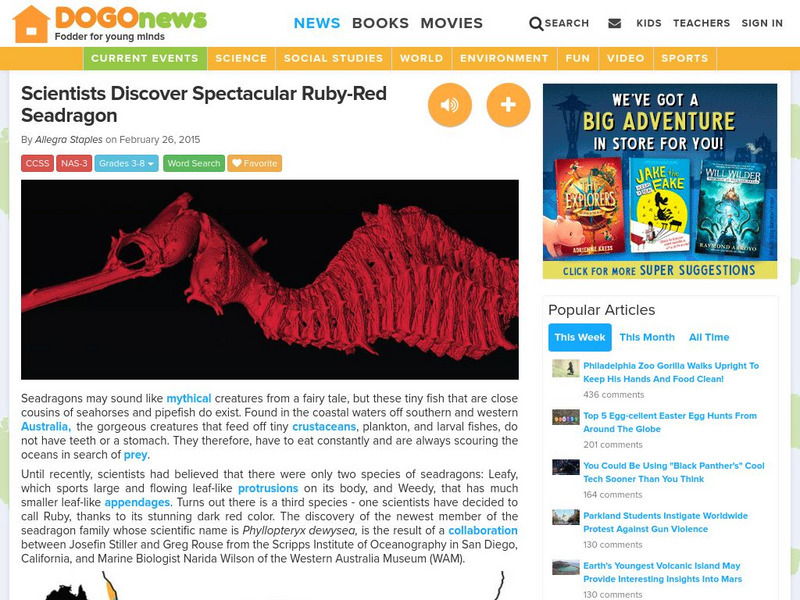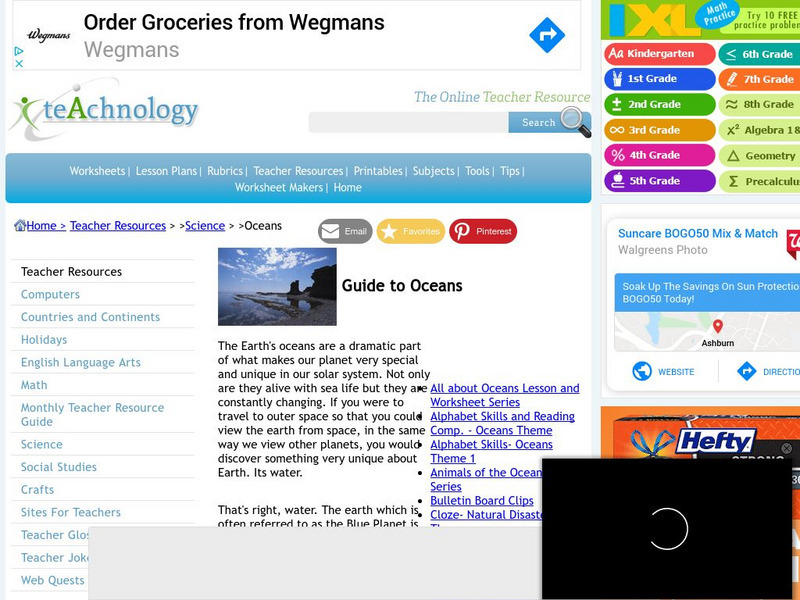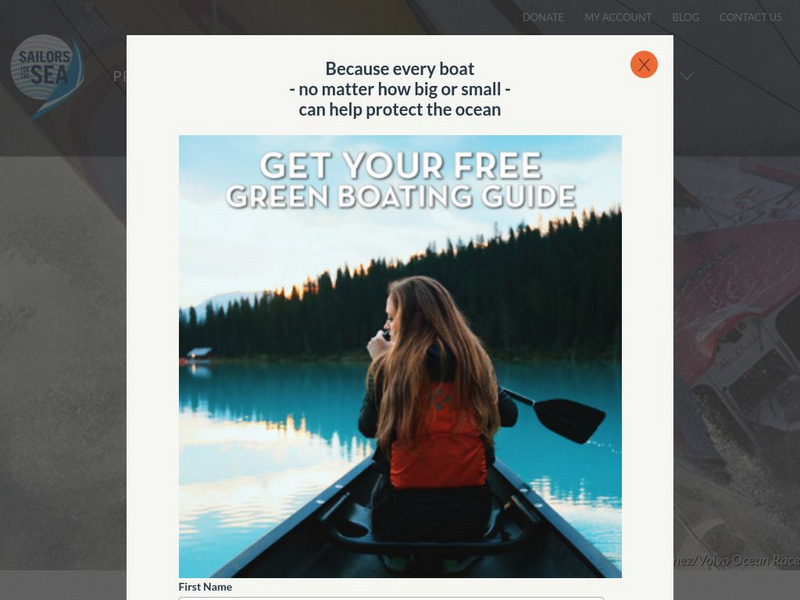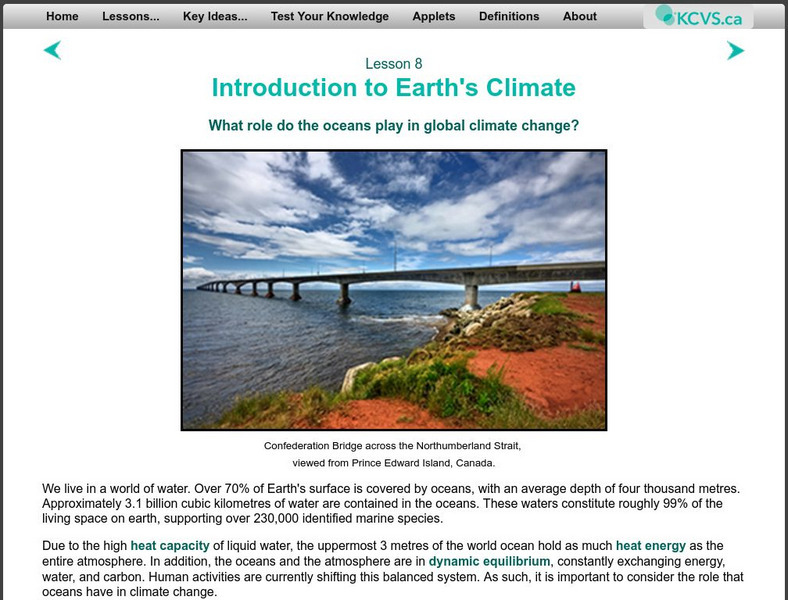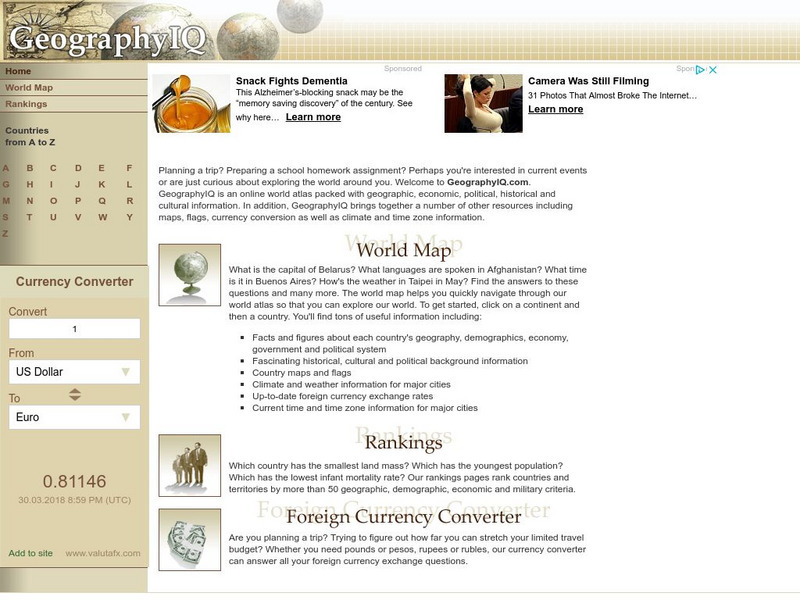Hi, what do you want to do?
Other
Rutgers: c.o.o.l. Class: Biology Project: Gone Fishing
In this C.o.o.l. project, you are given a task to complete. You will predict where fish should be found in a specific region.Follow the steps of the scientific process outlined on the left menu bar. Useful educational tool for both...
NOAA
Noaa: National Ocean Service: Education: Tides and Water Levels
A great resource for explaining and understanding tides. Find out what tides are and why it is so important to monitor them. This is an extensive tutorial followed by a set of review questions. All of the information can be downloaded as...
National Geographic
National Geographic: The World Ocean
A collection of four lessons where students look at the vital role oceans play in our lives, at the hydrosphere and the impact humans have on it, how humans use the oceans and who is responsible for protecting them, and the rationale...
DOGO Media
Dogo News: Scientists Discover Spectacular Ruby Red Seadragon
Read about the discovery of a seadragon. Includes video.
TeachEngineering
Teach Engineering: One World Ocean
In this activity, students learn about ocean currents and the difference between salt and fresh water. They use colored ice cubes to see how cold and warm water mix and how this mixing causes currents. Also, students learn how surface...
Texas Education Agency
Texas Gateway: Organisms and Environments: Humans and Ocean Systems
This tutorial overviews the ocean ecosystem and human's impact on it.
Texas A&M University
Ocean World: Bringing the Ocean to the Classroom
Online resource for students and teachers to see information on icebergs, fisheries, coral reefs, waves, currents and more. Provides teachers with learning activities. Has its own ask-an-expert site (Ask Dr. Bob), and provides real-time...
Teachnology
Teachnology: Oceans Teaching Theme
For any educator preparing a teaching theme/unit on oceans, this is the site for you! Included are links to a myriad of lesson plans, worksheets, hands on activities, web quests, interactive sites, teacher resources, and more.
Other
Sailors for the Sea: Protecting Our Oceans
Did you know that you can make a difference in keeping our oceans safe and beautiful? Become more knowledgeable about our oceans and the harm they face each day, including invasive species, overfishing and habitat alteration by perusing...
Annenberg Foundation
Annenberg Learner: Planet Earth
A series of seven instructional, hour-long videos presenting Earth-science topics such as plate tectonics, oceans, climate changes, natural resources, the Sun, and the future of our planet. Closed captioning option provided for each video.
Smithsonian Institution
National Museum of Natural History: Ocean Planet
Detailed website that was a companion to a 1995 traveling exhibit of the Smithsonian. Links to lesson plans and other educational materials are at the bottom of the page. Enter the exhibition to explore the world of the ocean.
NASA
Nasa: Sea Wi Fs Project: Teachers Resources
SeaWIFS refers to the Sea-viewing Wide Field-of-view Sensor, which is a satellite sensor that can monitor the color of the oceans and send data back to Earth. This page has a collection of scientific and educational resources on ocean...
Untamed Science
Untamed Science: Biology: World Biomes: Pelagic Biome
Learn about the different zones of the open ocean, the pelagic biome, and what organisms call each zone home.
King's Centre for Visualization in Science
Explaining Climate Change: Lesson 8: Climate Change and the Oceans
This is the eighth lesson in a series of learning modules on the topic of climate change. It explores the role that oceans play in global climate change. Includes comprehension questions and interactive tools for understanding the...
Smithsonian Institution
National Museum of Natural History: Ocean Portal, You Navigate
Delight in the fresh colors, sights, and sounds on this dynamic site on the ocean. Major categories consist of Ocean Life & Ecosystems, The Ocean Over Time, Ocean Science, and The Ocean and You. New information on sharks, a slideshow...
NASA
Nasa Earth Observatory: Global Maps: Sea Surface Temperature
This global map from NASA's Earth Observatory shows the sea surface temperature from July 2002 to October 2008. Learn the influences that sea surface temperature has on climate and weather.
Geographyiq
Geography Iq
Detailed geographical information on any country is available at this site. Within the World Map section, you can get facts and figures about each country's geography, demographics, government, political system, flags, historical and...
Museum of Science
Museum of Science: Looking at the Sea
There are 5 parts to this resource. You can click on the water planet, oceans in motion, life in the sea, scientists at sea and resources. There are also activities for teachers.
Climate Literacy
Clean: Climate Change and the Oceans
Students discover the role that the oceans play in climate change, and how climate change affects the oceans. It is lesson eight in a nine-lesson module "Visualizing and Understanding the Science of Climate Change."
Other
Science4 Us: Features
In the Earth's Features module, students explore mountains, volcanoes, caves, rivers and oceans and their place on Earth.
Natural History Museum
Natural History Museum: The Oceans
This online exhibit from the Natural History Museum is home to ten units covering various aspects of the world's oceans including frozen oceans, deep oceans, barnacles, coral reef, deep-sea fish, sponges, vents, and more.
The Franklin Institute
Treasures@sea: Exploring the Ocean Through Literature
This extensive resource consists of learning activities that integrate language arts with oceanography. Each activity is based on one of seven books about the ocean and are written to be adaptable. Includes writing activities, games and...
Utah Education Network
Uen: The World Game
Play the World Game to become familiar with continents, oceans, countries, and states.
Utah State Office of Education
Utah State Office of Education: Water's Importance to Life on Earth
A variety of activities to help students explore the relationship of water to life on Earth. Provides an opportunity to see how ocean levels have changed over time and what effect that can have on living things.








